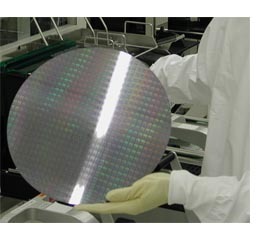Intel and Corning to develop EUV photomask substrates for 32 nm production
Santa Clara (CA) - Intel has entered a joint development agreement with Corning to develop ultra low thermal expansion (ULE) glass photomask substrates required for Extreme Ultraviolet (EUV) lithography and semiconductors with transistor structures smaller than 40 nm.
EUV has been discussed to be key for next-generation production techniques for several years. After launching the first EUV lithography unit in August of last year, Intel slowly is taking the technology out of its labs and prepares it for real world use. First chips using EUV are expected to be available in 2009.
Currently, semiconductors are built using a 193 nm wavelength of light to print transistors in processes as small as 80 nm in mass production and 65 nm for next-generation chips. According to Intel, 193 nm will lead to transistor sizes as small as 50 nm. EUV lithography will take over at this point and will allow manufacturers to create smaller transistors in the future as the technology uses a wavelength of 13.5nm.
Development of photomasks for EUV has kept engineers and researchers busy for some time now. Just one of the unique challenges is set by the simple physics: The photomask substrate changes its volume by being exposed to heat generated by the printing process. However, current requirement state that the material can only expand by a maximum of 1.5 nm for a temperature increase of 10 degrees Celsius.
Get Tom's Hardware's best news and in-depth reviews, straight to your inbox.

Wolfgang Gruener is an experienced professional in digital strategy and content, specializing in web strategy, content architecture, user experience, and applying AI in content operations within the insurtech industry. His previous roles include Director, Digital Strategy and Content Experience at American Eagle, Managing Editor at TG Daily, and contributing to publications like Tom's Guide and Tom's Hardware.
